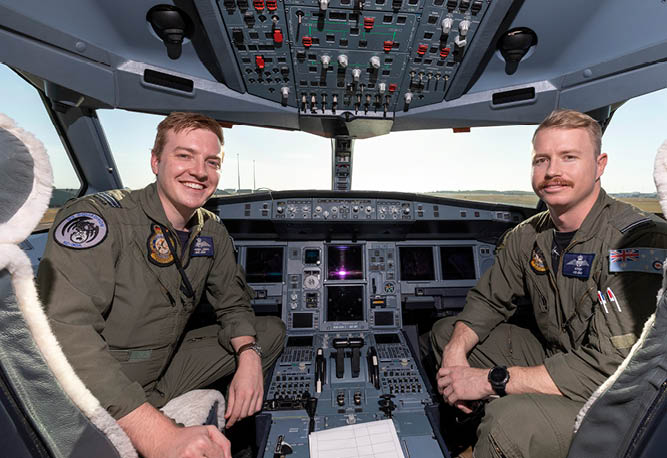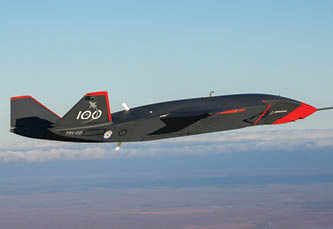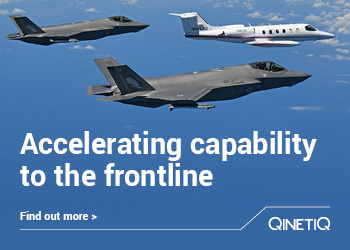The KC-30A Multi-Role Tanker Transport (MRTT) serves as an air-to-air refuelling aircraft that also provides the RAAF with strategic airlift capabilities. It was first flown by the RAAF in September 2011.
The RAAF currently has six KC-30A aircraft operated by No 33 Squadron, based at Amberley. Since 2014, one additional KC-30A was deployed in the Middle East under Operation Okra.
The KC-30A was selected in April 2004 to fulfil Project AIR 5402 for five aircraft equipped with wing-mounted pods for hose and drogue refuelling and a fuselage centreline refuelling boom. The acquisition contract for the aircraft was signed with then aircraft manufacturer EADS CASA in December 2004.
The MRTT is a substantially modified military derivative of the Airbus A330-200 airliner, which can carry a fuel load of more than 100 tonnes, and transfer part of that load to compatible aircraft.
The KC-30A MRTT can remain 1,800 km from its home base, with 50 tonnes of fuel available to offload for up to four hours. In its transport role, the aircraft is capable of carrying 270 passengers and can accommodate 34,000 kilograms of military and civilian cargo pallets and containers.
In 2018, Air Force then Chief of Joint Operations, Air Marshal Mel Hupfeld said the reliability and large air-to-air refuelling capability of the KC-30A has added tangible value to the Australian and coalition forces, with their large demand for aerial refuelling.

“The KC-30A has been a significant force multiplier for the Air Force and has proven itself over Iraq as part of Operation Okra,” AIRMSHL Hupfeld said.
The KC-30A is equipped with two forms of air-to-air refuelling systems, including an advanced refuelling boom system mounted under the fuselage of the aircraft and a hose and drogue refuelling pod underneath each wing. These systems are controlled by an air refuelling operator on the flight deck, who can view refuelling on 2D and 3D screens.
Advanced mission systems are also fitted to the aircraft. They include the Link 16 real-time data-link, military communications and navigation suites, and an electronic warfare self-protection system for protection against surface-to-air missiles.
AIRMSHL Hupfeld said, “Just one KC-30A can support the deployment of four fighter aircraft over 5,000 kilometres and has the versatility to refuel a range of different aircraft types. From Australian C-17A Globemaster IIIs to US Marine Corps AV-8B Harriers, British Eurofighters and French Dassault Rafales, the KC-30A can keep these planes in the air efficiently and effectively.”
During Exercise Arnhem Thunder in July 2021, less than an hour into a daytime mission, Air Force pilots Flight Lieutenant Kristen Crick and Flying Officer Danny Kitcher refuelled four F/A-18F Super Hornets and two EA-18G Growlers.
Whether it’s dragging fighters through the airspace or anticipating where they might need us for a top-off, we remain flexible and work together so they can meet their mission objectives.”
For the two pilots, the best things about flying the KC-30A were the variety and the people.
“We’re able to do passenger and cargo moves, hose-and-drogue and boom refuelling, and formation flying,” FLGOFF Kitcher said.
FLTLT Crick said: “Flying the KC-30A means you’re always working with a crew and 33SQN is full of good characters”.
“While the KC-30A is first and foremost an air-to-air refuelling system, given our multi-role, we’re not only working with receiver pilots for air-to-air refuelling, but also looking after passengers, and making sure we provide a comfortable service to get them to their next domestic or international destination,” FLTLT Crick said.
Main pic KC-30A MRTT pilots, FLTLT Crick and FLGOFF Kitcher after completing a mission during Exercise Arnhem Thunder 21.















